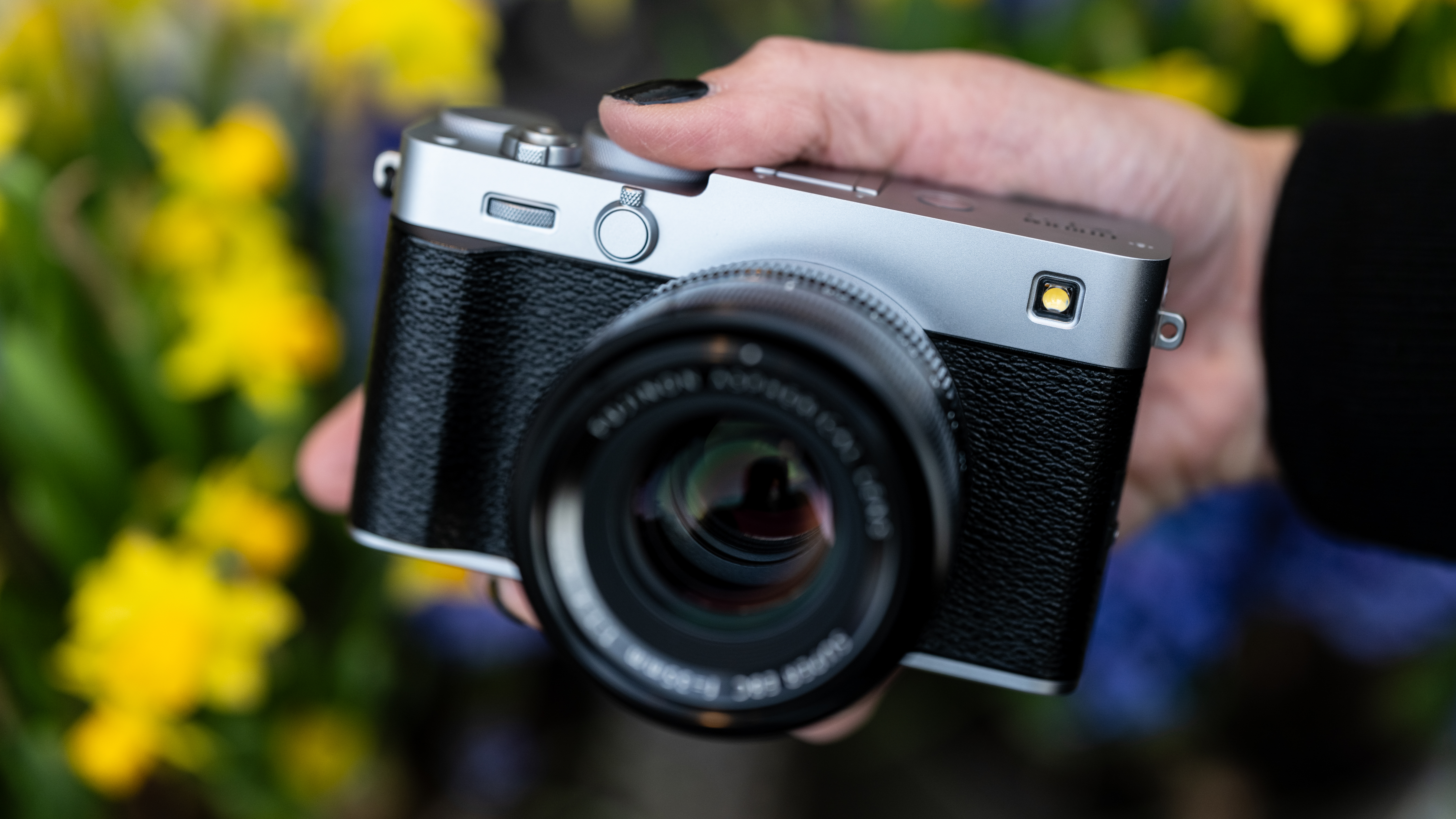The Fujifilm X-E5 price is more than 50 percent higher than the X-E4, but the features are no longer cheap either
The Fujifilm X-E5 price sits at $1,699 / £1,249 / AU$2,699, shifting from a budget camera to mid-tier

When the Fujifilm X-E4 launched in 2021, the compact mirrorless camera was clearly a budget choice, sitting even under the X-S10 at $949 / £799 / AU$1,399 body only or $1,049 / £949 / AU$1,799 bundled with a pancake lens. But, this morning, Fujifilm unveiled the X-E5. While the new rangefinder-inspired mirrorless looks similar to the X-E4, the price is far from it, sitting at $1,699 / £1,249 / AU$2,699 for the body only, or $1,899 / £1,549 / AU$3,049 bundled with the new 23mm f/2.8 lens.
The price increase – around a 78 percent increase in the US, about 56 percent in the UK and 50 percent in Australia – makes one thing abundantly clear: The Fujifilm X-E series is no longer about price. But, the camera’s specifications have shot up with the price, jumping from an entry-level 26.1 MP to the 40.2 MP sensor found on Fujifilm’s pricier X-Series cameras. Despite the increase in file size, the X-E5 can still maintain a respectable 20 fps maximum burst speed, with a 66-shot RAW buffer. The X-E5 also has the in-body stabilization not found on Fujifilm’s budget models.
The launch of the X-E5 effectively re-arranges Fujifilm’s mirrorless camera lineup. The X-E series is no longer priced below the X-S series. Now, Fujifilm’s most affordable camera (excluding discontinued models that can sometimes still be found at a discount) is the X-M5, followed by the X-S20, then the X-T50. The X-E5 sits at the same list price as the X-T5, which has the same sensor but a larger SLR-inspired body and options that come with the larger size, like dual SD card slots. The X-H2 and X-H2s remain seated at the top of Fujifilm’s APS-C lineup.

The price increase will undoubtedly bring some complaints, as all price increases tend to do. But in a way, the X-E5 makes sense. I’ve long thought it odd to pay more for a fixed lens X100VI when you could get similar capabilities with more versatility on a mirrorless camera. The X-E5 with its kit lens is now a few hundred more than the X100VI. It’s less pocketable, but much more versatile.
While I think the price has increased nearly as much as the specifications, I feel like the X-E5 should be priced slightly under the X-T5 rather than matching it. The X-T5 has dual card slots, a faster electronic shutter speed, and a better viewfinder, albeit the X-E5 has a slightly faster burst rate and smaller body.
Repositioning the X-E5 to a higher price point doesn’t leave Fujifilm without a budget choice. The X-M5 is similarly compact, but has a lower resolution and lacks a viewfinder. As a budget alternative to the X100VI, however, the X-M5 has been hard to find in stock.
That’s the other thing about the price – I wonder if the X-E5 will have fewer stock issues than the X-M5 as a pricier, high-end camera. I still can’t find the X-M5 available in the US, and the camera launched in November of 2024. The X-T5, priced similarly to the X-E5, seems to have faced far fewer stock issues.
The best camera deals, reviews, product advice, and unmissable photography news, direct to your inbox!
The other bit of good news about the price jump? The newly announced XF 23mm f/2.8 R WR kit lens will be $499 / £399 on its own (Australian price TBC), but only increases the body-only cost of the X-E5 by $200 / £250, so there’s a significant kit discount for the bundle.
In the US, tariff uncertainty remains – but the US price of the X-E5 at $1,699 body only converts almost exactly to the UK list price of £1,249. That, combined with Fujifilm’s new “JP” models in the US, hints that price increases may not be part of Fujifilm’s strategy for covering increased import taxes in the US, at least not for now.
Pre-orders for the Fujifilm X-E5 are open now, with shipping expected to begin in mid-August.
You may also like
Browse more Fujifilm X100VI alternatives, or take a look at the best retro cameras.

With more than a decade of experience writing about cameras and technology, Hillary K. Grigonis leads the US coverage for Digital Camera World. Her work has appeared in Business Insider, Digital Trends, Pocket-lint, Rangefinder, The Phoblographer, and more. Her wedding and portrait photography favors a journalistic style. She’s a former Nikon shooter and a current Fujifilm user, but has tested a wide range of cameras and lenses across multiple brands. Hillary is also a licensed drone pilot.
You must confirm your public display name before commenting
Please logout and then login again, you will then be prompted to enter your display name.
